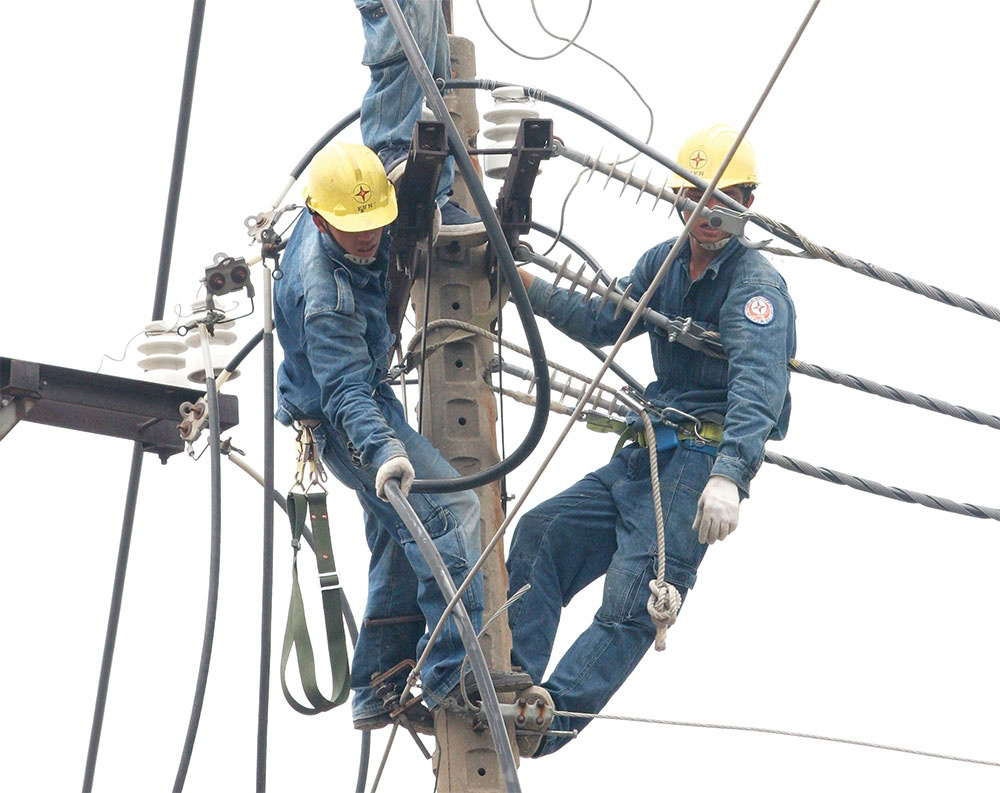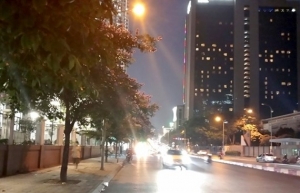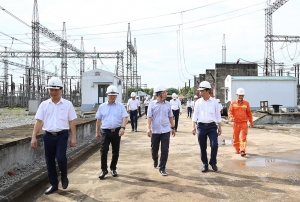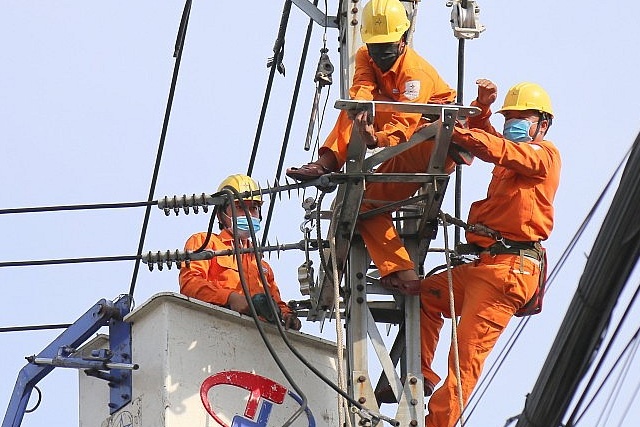North's electricity supply may be strained until July
 |
Nguyen Quoc Trung, deputy director of Vietnam Electricity's (EVN) National Load Dispatch Centre, said on June 9 in, "The heat in the north has lowered in recent days due to heavy rain, which has helped reduce stress on the power system."
El Nino has a close relationship with the dearth of electricity in Vietnam. Since April, the electrical supply has encountered numerous difficulties. In comparison to the same period in 2022, the power output of the entire system has increased by 20 per cent, resulting in a burden of more than 453 million kWh.
Currently, hydropower and thermal power are the primary sources of electricity in the north, but both of these sources are experiencing issues. In comparison to the previous year, the average mobilised hydropower output decreased by half, reaching only 12 to 15 per cent of the generating capacity.
A number of additional hydroelectric reservoirs in the north are also dry. In addition to the reduction in power generation from hydroelectric power plants, thermal power plants also encountered numerous difficulties as a result of prolonged operation at maximal capacity.
To ensure electricity supply, EVN has mobilised all power sources across the nation, including diesel power sources that cost more than 21 cents per kWh.
"If there is no immediate remedy, we will lose up to 1,920MW of power when the Hoa Binh Hydropower Plant runs out of water and the water level drops to zero. This will have a significant impact on the power supply not solely in the north but on a national scale until July," Trung said.
The Ministry of Industry and Trade has instructed EVN to implement numerous solutions to guarantee the production and consumption of electricity. However, "importing electricity is currently challenging" due to the difficulty of exporting electricity from China and Laos, Trung said. China also faces power shortages and must reduce capacity.
Director of Electric Power Trading Company's Electricity Trading Department Nguyen Huu Khai said that the amount of electricity imported from China is approximately four million kWh per day, while the amount imported from Laos is over seven million kWh per day. Approximately 1.3 per cent of the total daily electricity consumption of nearly 900 million kWh is imported.
According to Khai, the quantity of electricity China sells to Vietnam has fallen significantly in recent days. Vietnam has imported electricity since 2005 and continues to do so.
According to the ministry, the entire northern hydropower system's available capacity was 4,147MW on June 8, 15MW more than the previous day. Going forward, however, the pressure to operate the reservoir system will increase, placing a significant burden on coal-fired power facilities. Many coal-fired power facilities, with a total capacity of up to 2,600MW, experienced difficulties due to the constant mobilisation of sources.
In Hanoi and the northern provinces, power outages not only alternate between 1 and 2 hours, but can last anywhere from half a day to an entire day. In areas where electricity is heavily utilised for production, electricity is prioritised for production during the day and only provided to residents at night.
 | People, enterprises save electricity in prolonged hot weather Nguyen Thi Hoa, who lives in Tay Ho district in Hanoi, has actively reduced her electricity usage over the past two months. |
 | EVN strives to ensure stable electricity supply for the north The North-South 500kV transmission line plays an important role in ensuring electricity for the northern region as the power supply is limited, the water falling into the hydropower reservoirs is exhausted, much of the lake water evaporates, and the electricity demand in the hot season skyrockets. |
 | Prime Minister seeks electricity supply guarantees Prime Minister Pham Minh Chinh has requested that the Ministry of Industry and Trade (MoIT) conduct a thorough examination and assessment of the electricity supply situation by June 10. The PM believes it is particularly necessary to evaluate emerging factors to improve the efficacy and productivity of Electricity of Vietnam (EVN) and to devise proactive and expeditious response scenarios. |
What the stars mean:
★ Poor ★ ★ Promising ★★★ Good ★★★★ Very good ★★★★★ Exceptional
Related Contents
Latest News
More News
- Businesses ramp up production as year-end orders surge (December 30, 2025 | 10:05)
- Vietjet chairwoman awarded Labour Hero title (December 29, 2025 | 13:06)
- How to unlock ESG value through green innovation (December 29, 2025 | 10:03)
- AI reshapes media and advertising industry (December 29, 2025 | 08:33)
- FPT and GELEX sign deal to develop blockchain tech for global markets (December 29, 2025 | 08:29)
- Vietnam’s GDP forecast to grow by 9 per cent in 2026 (December 29, 2025 | 08:29)
- Women entrepreneurs are key to Vietnam’s economic growth (December 29, 2025 | 08:00)
- Vietnam's top 500 value-creating enterprises announced (December 27, 2025 | 08:00)
- The PAN Group shaping a better future with ESG strategy (December 26, 2025 | 09:00)
- Masan Consumer officially lists on HSX, marking the next phase of value creation (December 25, 2025 | 13:20)

 Tag:
Tag:





















 Mobile Version
Mobile Version